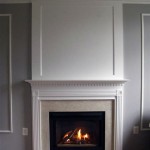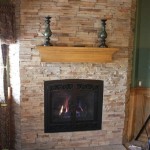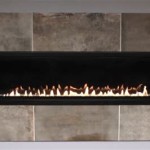Cleaning Fireplace Stone: A Comprehensive Guide
Fireplaces, particularly those constructed with natural stone, serve as focal points in many homes, providing warmth and aesthetic appeal. Over time, however, fireplace stone can accumulate soot, creosote, dust, and other residues from burning wood. This buildup not only diminishes the stone's visual appeal but can also contribute to unpleasant odors and, in severe cases, pose a fire hazard. Therefore, regular and proper cleaning of fireplace stone is essential for maintaining both its beauty and the safety of the home.
This article provides a detailed guide on how to effectively clean fireplace stone, covering various cleaning methods, necessary tools, and safety precautions. Understanding different types of stone, the nature of the soiling, and appropriate cleaning solutions is crucial for achieving optimal results without damaging the fireplace.
Identifying the Type of Fireplace Stone
Before commencing any cleaning process, it is imperative to identify the type of stone used in the fireplace construction. Different types of stone possess varying levels of porosity and resistance to chemicals. Common types of fireplace stone include:
Limestone: A sedimentary rock known for its porous nature. It is susceptible to staining and damage from acidic cleaners. Limestone often features a matte finish and may exhibit fossils or mineral deposits.
Granite: An igneous rock that is generally durable and resistant to stains. Granite is less porous than limestone and can withstand stronger cleaning solutions. Granite typically displays a speckled or granular appearance.
Slate: A metamorphic rock characterized by its layered structure. Slate is relatively non-porous and resistant to heat. It often has a dark gray or black color and a slightly textured surface.
Fieldstone/River Rock: Naturally occurring stones with irregular shapes and textures. These stones can vary significantly in composition and porosity, requiring careful consideration when selecting cleaning methods.
Manufactured Stone Veneer: A concrete-based product designed to mimic the look of natural stone. These veneers can vary in their composition and porosity, so it's essential to confirm the manufacturer's cleaning recommendations.
Identifying the stone type allows for the selection of appropriate cleaning agents and techniques, minimizing the risk of damage or discoloration.
Preparing for Cleaning
Proper preparation is key to a successful and safe cleaning process. Before beginning, gather the necessary tools and materials and take steps to protect the surrounding area.
Gathering Supplies: The specific supplies required will depend on the cleaning method chosen, but generally include:
* A stiff-bristled brush (nylon or natural fiber, depending on the stone type)
* A soft-bristled brush or sponge
* Buckets for holding cleaning solutions and rinse water
* Drop cloths or plastic sheeting to protect the surrounding floor and furniture
* Painter's tape to protect adjacent surfaces (e.g., wood trim)
* Cleaning solutions (discussed in detail below)
* A spray bottle for applying cleaning solutions
* Rubber gloves to protect hands
* Eye protection, such as safety glasses or goggles
* A dust mask or respirator, especially if working in a poorly ventilated area or if dealing with heavy soot deposits
* Clean cloths or towels for wiping and drying
* A vacuum cleaner with a brush attachment to remove loose debris
Protecting the Surrounding Area: Lay down drop cloths or plastic sheeting to protect the floor and any nearby furniture from cleaning solutions and dislodged soot. Use painter's tape to mask off any adjacent surfaces, such as wood trim or painted walls, to prevent damage or discoloration. Open windows and doors to provide adequate ventilation during the cleaning process.
Preliminary Cleaning: Before applying any cleaning solutions, use a vacuum cleaner with a brush attachment to remove loose dirt, dust, and soot from the surface of the stone. This will prevent these particles from being ground into the stone during the cleaning process, making it more effective. A stiff-bristled brush can also be used to loosen stubborn debris, but exercise caution to avoid scratching the stone.
Cleaning Methods for Fireplace Stone
Several cleaning methods can be employed to remove soot and stains from fireplace stone. The choice of method will depend on the type of stone, the severity of the soiling, and personal preference. Always test any cleaning solution in an inconspicuous area before applying it to the entire fireplace.
Dry Cleaning: For light soot deposits or dust, dry cleaning methods may suffice. This involves using a stiff-bristled brush to scrub the stone surface, followed by vacuuming or wiping away the dislodged debris. Dry cleaning is particularly suitable for delicate stones that are sensitive to moisture or chemicals. It is also a good initial step before proceeding with wet cleaning methods.
Mild Soap and Water: A solution of mild dish soap and warm water is a gentle and effective cleaning option for many types of stone. Mix a small amount of soap with warm water and apply the solution to the stone using a soft-bristled brush or sponge. Gently scrub the surface to loosen dirt and soot. Rinse thoroughly with clean water and dry with a clean cloth. Avoid using abrasive sponges or scrub brushes, as they can scratch the stone.
Baking Soda Paste: Baking soda is a mild abrasive and deodorizer that can be used to remove stubborn stains from fireplace stone. Mix baking soda with water to form a thick paste. Apply the paste to the stained areas and let it sit for 15-20 minutes. Gently scrub the paste with a soft-bristled brush or sponge, then rinse thoroughly with clean water and dry with a clean cloth. Baking soda is particularly effective for removing soot stains and neutralizing odors.
Vinegar Solution: A diluted solution of white vinegar and water can be used to clean acid-resistant stones such as granite or slate. However, vinegar should never be used on limestone or other acid-sensitive stones, as it can etch or damage the surface. Mix equal parts white vinegar and water in a spray bottle. Spray the solution onto the stone surface and let it sit for a few minutes. Gently scrub the surface with a soft-bristled brush or sponge, then rinse thoroughly with clean water and dry with a clean cloth.
Commercial Stone Cleaners: Various commercial stone cleaners are available for different types of stone and levels of soiling. When using a commercial cleaner, carefully read and follow the manufacturer's instructions. Test the cleaner in an inconspicuous area before applying it to the entire fireplace to ensure it does not damage or discolor the stone. Opt for pH-neutral cleaners specifically formulated for natural stone to minimize the risk of damage.
Poultice for Deep Stains: For deeply embedded stains, a poultice can be used to draw the stain out of the stone. A poultice is a paste-like mixture that is applied to the stain and covered with plastic wrap. The poultice draws the stain out of the stone through absorption. Several poultice recipes exist, including those using baking soda, diatomaceous earth, or commercial poultice powders. Apply the poultice to the stained area, cover it with plastic wrap, and let it sit for 24-48 hours. Remove the poultice and rinse the area thoroughly with clean water. Repeat the process if necessary.
Pressure Washing: While pressure washing can be effective for removing heavy soot deposits from durable stones like granite, it should be approached with caution. Excessive pressure can damage the stone, especially if it is porous or has existing cracks. If using a pressure washer, start with a low pressure setting and gradually increase it as needed. Maintain a safe distance between the nozzle and the stone surface. Avoid pressure washing delicate stones like limestone or slate.
Professional Cleaning: For heavily soiled fireplaces or delicate stones, consider hiring a professional stone cleaning service. Professionals have the knowledge, experience, and equipment to safely and effectively clean fireplace stone without causing damage. They can also provide advice on maintaining the stone and preventing future soiling.
After Cleaning: After cleaning, thoroughly rinse the stone with clean water to remove any remaining cleaning solution. Use a clean cloth or towel to dry the stone. Allow the fireplace to air dry completely before using it. Applying a stone sealant after cleaning can help protect the stone from future staining and make it easier to clean.

How To Clean A Stone Fireplace Homeowner S Guide Bob Vila

Stone Fireplace Makeover Part 1 Plans Prep Organized Ish

Ask A Fireplace Expert How To Clean Stone

Stone Fireplace Makeover Part 1 Plans Prep Organized Ish

How To Clean A Limestone Fireplace

How To Clean A Neglected Stone Fireplace Georgian Cottage

How To Clean A Limestone Fireplace Stamford Stone At Home

How To Clean Stone Fireplace Maid Services Talk Local Blog

How To Clean Stone Fireplace Mantels

How To Clean A Stone Fireplace Homeowner S Guide Bob Vila
Related Posts








